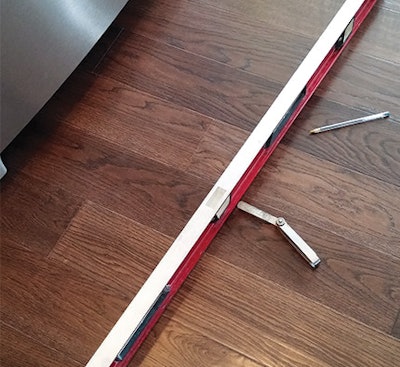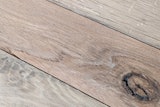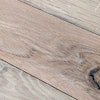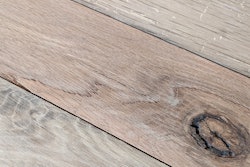

The Problem
I was called to do an inspection on a floor in a new home in British Columbia because the customer was complaining about soft spots, unevenness and noise.
What Happened
The click-lock prefinished engineered flooring measured 36 inches long, 43⁄4 inches wide and .425 thick and had a composite wood core. It was on a 3⁄4-inch plywood subfloor over a crawl space with joists 16 inches on center and had been installed by the builder throughout most of the main living area.
The homeowners were concerned about the flooring immediately after moving in, complaining about soft spots and a "rolling" appearance of the flooring in various areas. Eight months after moving in, the builder addressed some of the concerns by removing some flooring in the entry and repairing the subfloor, as well as removing some baseboard near the entry and cutting an expansion space where the wood flooring butted up against the tile in the entry.
The Inspection
Moisture content readings, temperature and relative humidity were all tested and found to be within the range of "normal."
From a standing position in the entry I observed some unevenness across the floor. As I walked across the floor, there was a random crackling noise. I also noticed several areas of deflection. In one area I used a 4-foot straightedge, feeler gauges and firm hand pressure to find a deflection of 0.075 inch. Several areas around the home had similar measurements.
I notified the commissioning party that my investigation would need to include removal of the flooring and baseboard for an accurate measurement. With written permission I removed the baseboard in several areas to measure the expansion; everything was within the manufacturer's tolerance. I then removed an area of the "rolling" flooring and measured the subfloor, which had a variation of 0.214 inches in a 6-foot radius. This was clearly a case of an uneven subfloor causing movement in the flooring.
How to Fix the Floor
The subfloor must be flattened to within the flooring manufacturer's guidelines before the flooring can be reinstalled.
In the Future
If the flooring manufactu rer doesn't have directions for subfloor flatness, the NWFA Installation Guidelines should be used. They state the subfloor should be flat to within 3⁄16 inch in 10 feet or 1⁄8 in 6 feet. If a wood subfloor is out of that tolerance, high spots must be sanded down or low areas built up.


































